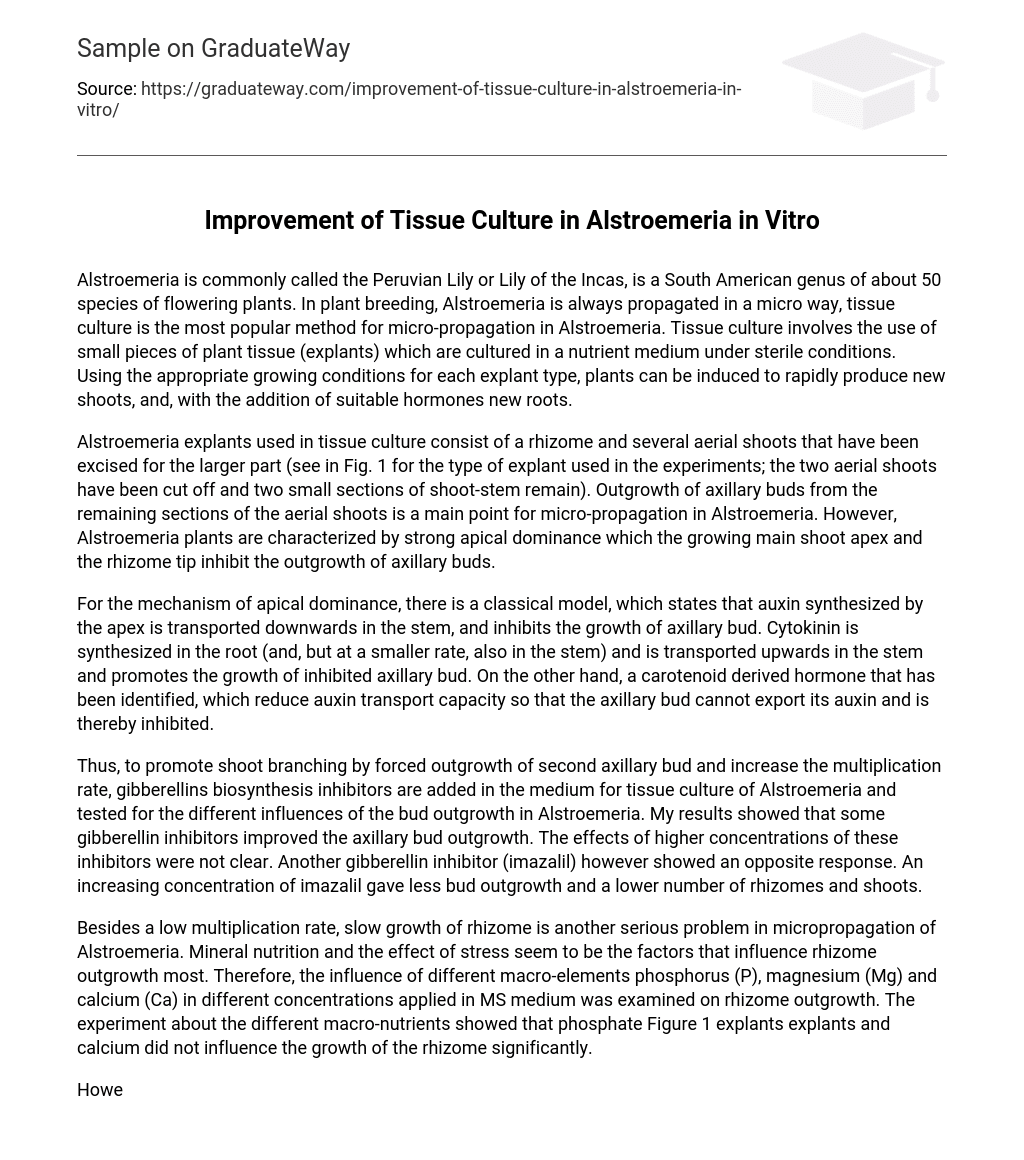Alstroemeria is commonly called the Peruvian Lily or Lily of the Incas, is a South American genus of about 50 species of flowering plants. In plant breeding, Alstroemeria is always propagated in a micro way, tissue culture is the most popular method for micro-propagation in Alstroemeria. Tissue culture involves the use of small pieces of plant tissue (explants) which are cultured in a nutrient medium under sterile conditions. Using the appropriate growing conditions for each explant type, plants can be induced to rapidly produce new shoots, and, with the addition of suitable hormones new roots.
Alstroemeria explants used in tissue culture consist of a rhizome and several aerial shoots that have been excised for the larger part (see in Fig. 1 for the type of explant used in the experiments; the two aerial shoots have been cut off and two small sections of shoot-stem remain). Outgrowth of axillary buds from the remaining sections of the aerial shoots is a main point for micro-propagation in Alstroemeria. However, Alstroemeria plants are characterized by strong apical dominance which the growing main shoot apex and the rhizome tip inhibit the outgrowth of axillary buds.
For the mechanism of apical dominance, there is a classical model, which states that auxin synthesized by the apex is transported downwards in the stem, and inhibits the growth of axillary bud. Cytokinin is synthesized in the root (and, but at a smaller rate, also in the stem) and is transported upwards in the stem and promotes the growth of inhibited axillary bud. On the other hand, a carotenoid derived hormone that has been identified, which reduce auxin transport capacity so that the axillary bud cannot export its auxin and is thereby inhibited.
Thus, to promote shoot branching by forced outgrowth of second axillary bud and increase the multiplication rate, gibberellins biosynthesis inhibitors are added in the medium for tissue culture of Alstroemeria and tested for the different influences of the bud outgrowth in Alstroemeria. My results showed that some gibberellin inhibitors improved the axillary bud outgrowth. The effects of higher concentrations of these inhibitors were not clear. Another gibberellin inhibitor (imazalil) however showed an opposite response. An increasing concentration of imazalil gave less bud outgrowth and a lower number of rhizomes and shoots. Besides a low multiplication rate, slow growth of rhizome is another serious problem in micropropagation of Alstroemeria.
Mineral nutrition and the effect of stress seem to be the factors that influence rhizome outgrowth most. Therefore, the influence of different macro-elements phosphorus (P), magnesium (Mg) and calcium (Ca) in different concentrations applied in MS medium was examined on rhizome outgrowth. The experiment about the different macro-nutrients showed that phosphate Figure 1 explants explants and calcium did not influence the growth of the rhizome significantly. However magnesium did improve the number of growth of rhizome and shoot, but the effects on rhizome and shoot multiplication were not big. It was nice to discover and help unravel some of the fundamental secrets that determine the effective micro-propagation of Alstroemeria. With the help of Mrs. Pumisutapon MSc and Dr. Geert-Jan de Klerk in Wageningen UR Plant breeding, I was allowed to make my first steps in discovering fundamental research.





